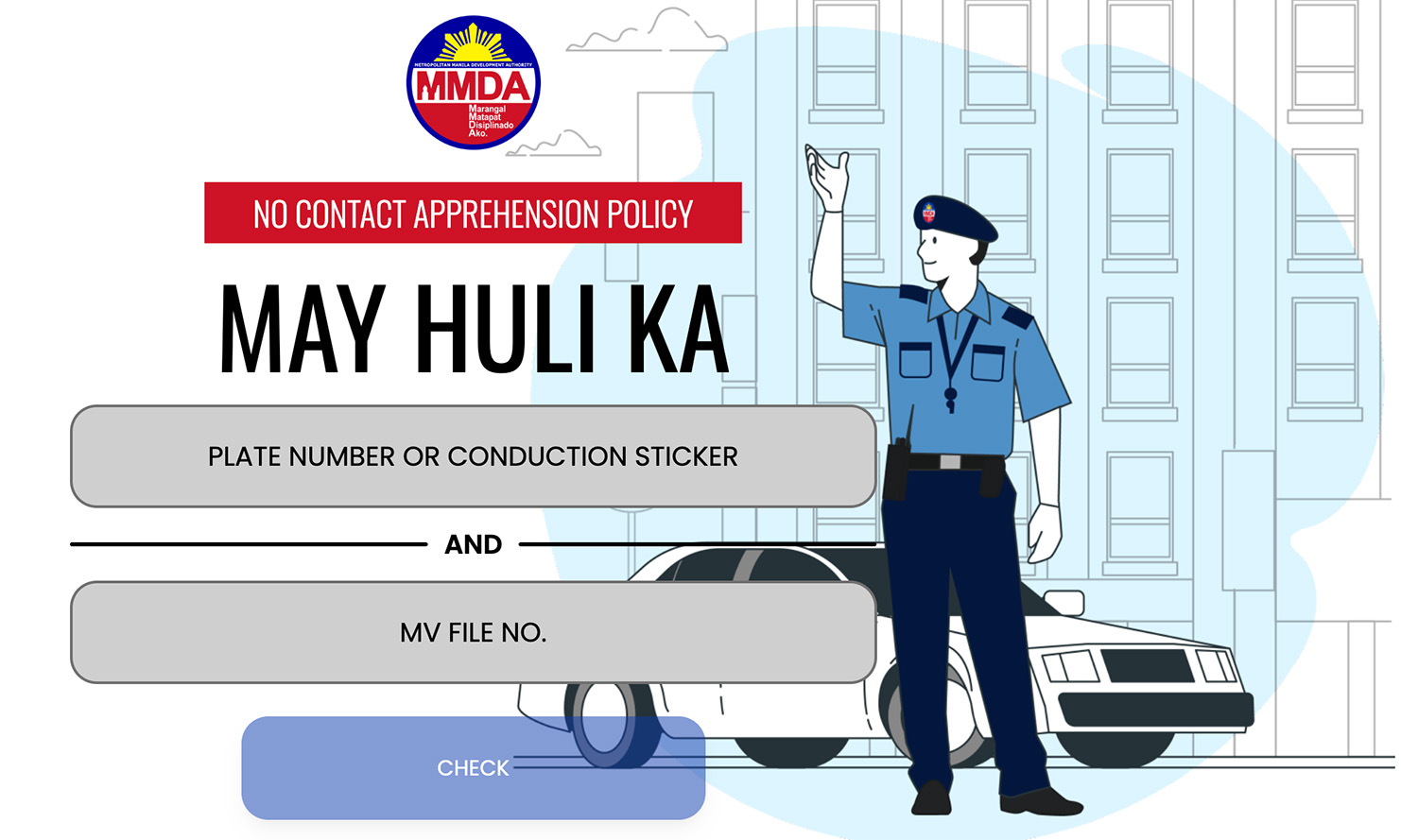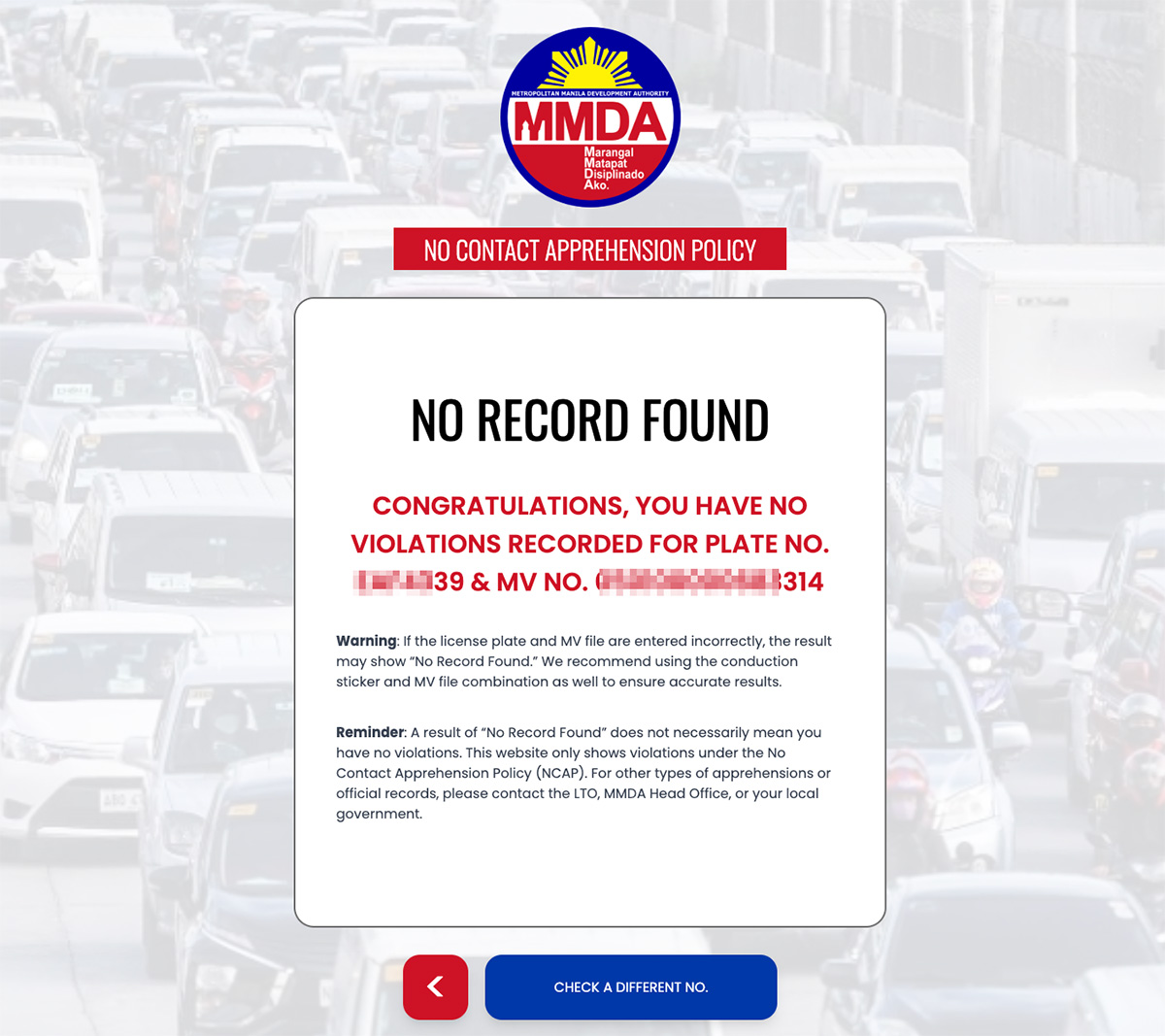In an innovative move to modernize traffic law enforcement, the Metropolitan Manila Development Authority (MMDA) recently launched May Huli Ka, a revamped web portal aimed at helping motorists easily check and manage traffic violations caught through the No Contact Apprehension Policy (NCAP). With data privacy, accessibility, and future-proofing at its core, the portal represents a major step forward in Metro Manila’s traffic management strategy.
What Is the May Huli Ka Portal?
Hosted at mayhulika.mmda.gov.ph, the portal allows motorists to:
- Input their license plate or conduction sticker
- Enter their Motor Vehicle (MV) File Number
- Tap “Check” to display any NCAP-recorded violations
This dual-input system, combining plate and MV file detail, ensures that only authorized owners can see their violation history — a crucial upgrade from the previous iteration that required only plate numbers
How to Use the May Huli Ka Portal
Navigating the May Huli Ka portal is quick and user-friendly, provided you have the correct vehicle information. Here’s a step-by-step guide on how to check if your vehicle has been flagged for a traffic violation:
Step 1: Visit the Official Website
Go to mayhulika.mmda.gov.ph using a desktop browser or mobile device. Make sure your internet connection is stable for a smooth experience.

Step 2: Prepare Your Vehicle Information
Before accessing the portal, ensure you have the following details ready:
- License Plate Number (or Conduction Sticker Number for vehicles without plates yet)
- MV File Number — This can be found in the upper left portion of your Certificate of Registration (CR).
Both inputs are required. Without the MV File Number, the system will not return any data due to privacy restrictions.
Step 3: Enter Your Details
Input the Plate/Conduction Number in the first field and the MV File Number in the second field.
Step 4: Click the “Check” Button
After verifying the inputs, click on the “Check” button to initiate the search.
Step 5: Review Results
If your vehicle has been flagged, the portal will display:
- The date and time of the offense
- The specific traffic violation committed
- The location where the infraction occurred
- The amount of the fine
- Photo or video evidence (coming soon in mobile version)
- Options for appeal or online settlement
If no violation is found, a “No Record Found” message will appear.

Step 6: Take Action (If Necessary)
- If a violation exists, follow the on-screen steps to pay fines or contest the citation.
- Take note of the reference number for tracking purposes.
Payments can typically be settled at authorized payment centers or online via Bayad Center, GCash, or Landbank LinkBiz, depending on system updates
Privacy by Design: Compliance With Data Laws
A key advancement is the necessity of the MV File Number — typically found on your official OR/CR. This securely verifies identity, aligning the portal with the Data Privacy Act of 2012 and ensuring confidential protection. With plate-only searches now phased out, the privacy concerns of earlier systems are effectively addressed.
What Can Motorists Expect?
Comprehensive Violation Details
If flagged, users will see:
- Date and time of violation
- Exact location
- Offense type
- Associated fines
- Guidance for settlement and appeal steps
Step-by-Step and Next Steps
The portal offers clear instructions on:
- How to pay fines (online and offline)
- Appeal procedures, with timelines and hearing info
Future Enhancements
According to MMDA Chairman Atty. Don (Romando) Artes:
- A mobile app will soon accompany the portal
- Users can create personal accounts, register multiple vehicles, and receive SMS/email alerts
- The app will grant direct access to video/photo evidence, contest violations, and possibly schedule hearings
Chairman Artes projects a mobile app rollout within one to two months
Strategic Implementation & Stakeholder Collaboration
The portal was unveiled at MMDA’s Command Center in Pasig City, with notable attendees such as PNP Chief Gen. Nicolas Torre III, transport group leaders, and ride-hailing firm representatives. This cross-sector collaboration signals an inclusive and well-rounded approach to urban traffic management.
Broader Implications for Metro Manila
- Enhanced Enforcement – CCTV cameras across 22 key thoroughfares complement NCAP’s non-intrusive approach. Violations are handled via mail notifications.
- Administrative Efficiency – Online tracking, alerts, and appeals reduce need for physical visits, expediting decisions and minimizing bottlenecks.
- Access for Fleet Operators – A consolidated single-account system simplifies oversight for transport and business fleets
- Transparency & Trust – Published violations and evidence enhance fairness, reducing corruption opportunities.
Motorist Benefits
- User-Friendly Interface: Mobile, tablet, or desktop compatible — as easy as check-and-go .
- Data Safety: Dual verification safeguards your personal and vehicle information.
- Timely Alerts: With upcoming SMS/email, you’re informed before fines escalate.
- Evidence Access: Soon, you’ll see the actual violation footage — vital for contesting incorrect citations.
- Convenient Appeals: From filing to hearing, everything digitized — less hassle, more clarity.
Tips for Smooth Portal Use
- Double-check plate and MV File inputs — typos can mislead results (“No Record Found” despite actual violations)
- Respond promptly — violations must be settled or appealed within 7 days to avoid penalties like vehicle registration holds.
- Keep OR/CR handy — the MV File Number is essential.
- Stay alert — sign up for upcoming alerts to avoid missing notices.
Looking Ahead: The Future of Digital Traffic Management
May Huli Ka lays the foundation for an integrated ecosystem that may include:
- eGovPH centralization — MMDA’s system could become part of bigger e-government infrastructure
- E-license platform linking driver’s record with vehicle data for unified handling .
- AI and enhanced CCTV — more roads, smarter detection, and faster processing.
Over time, these innovations stand to boost road safety, reduce congestion, and foster public trust in traffic enforcement.
Read Also:LTO Portal or LTMS Portal: Step-by-Step Guide on How to Register
